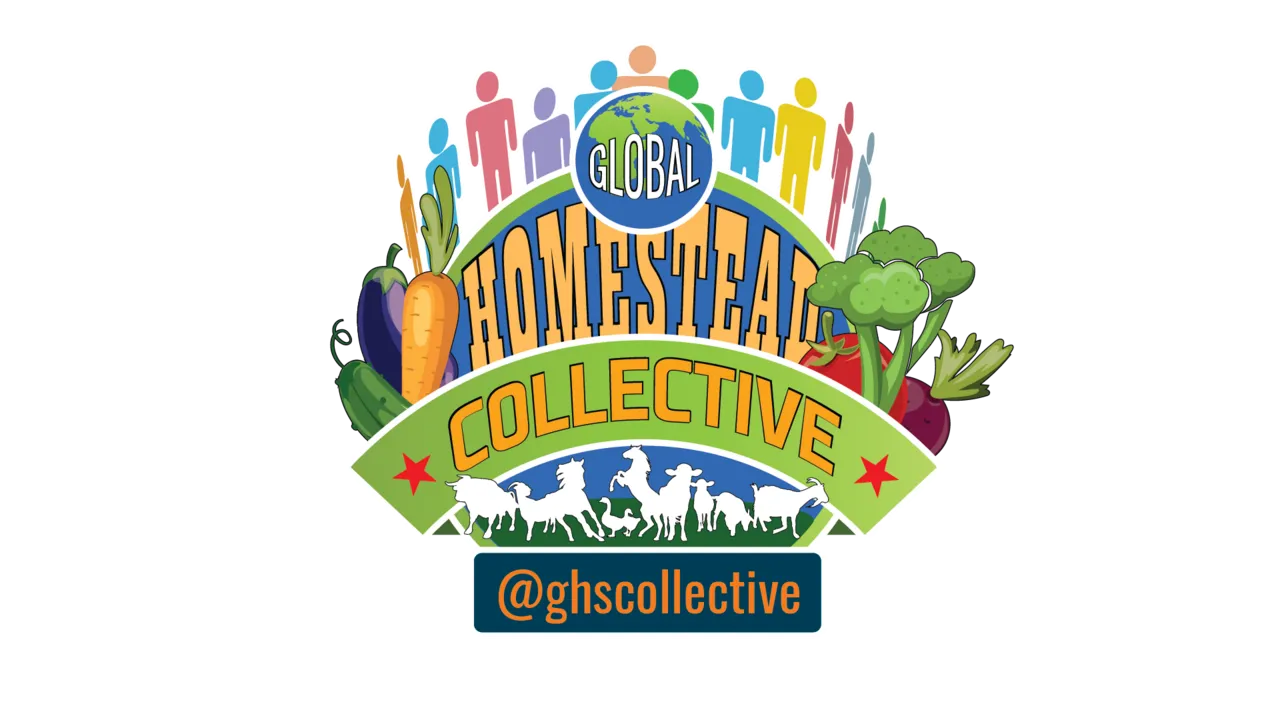
Elderberry Bushes in Field with Ripening Berries

Natural medicine and alternative healing have been a big part of my life pretty much since I was born, thanks to my mother, her mother and her grandmother, all of whom were wise women, natural (organic) gardeners, and lay herbalists.
And all were exceptional at what we now call medicinal cooking, though, at the time, they would simply have called it cooking. They were natural healers, as many mothers are, and/or become with experience through the years.
But, even though I was raised with their healing expertise, what they were doing was simply "how it was done" in my mind, and I thought everyones' moms could do the same.

In fact, it wasn't until my father bought a small health food store, when I was a sophomore in high school, that I realized how truly exceptional these women were, and how uncommon their knowledge and expertise was becoming, as more and more people forgot (or were simply never taught) the traditional healing methods of their forbears.
And, had it not been for forward-thinking herbalists such as Juliette di Bairicli-Levy, and the generations of herbalists that she in turn inspired, such as Rosemary Gladstar, Susun Weed, myself, and many others, we would likely have lost far more knowledge of natural medicinal remedies and, yes, even cures, from around the world.
As in every human endeavour, when it comes to natural medicine and traditional healing knowledge, we stand on the shoulders of giants.

Yesterday I mentioned my love for elderberry, my years-long love for making elderberry syrup, and how many uses we had for the bounty from our prolific elderberry bush in our Largo, Florida, back yard.
What I did not mention was that, prior to realizing what it was, I damned near mowed the plant down, as it was an out-of-place volunteer midway between my two beloved pink grapefruit trees.
But happily, about that time, I had ordered a number of fruiting plants and bushes from a grower in the Orlando area. When looking at the leaves of the two starter elderberry bushes, that I had initially planted in pots, I recognized their resemblance to the leaves on the much-larger bird-planted bush in our yard. Good thing, too!

Interestingly, my two purchased elderberries, which as I recall were varieties Adams and Johns, never did a thing . . . one died immediately after I planted it in the yard, and the other hung on for a few months longer, but never thrived, despite being in a similar exposure and roughly ten feet from the volunteer bush, which thrived for years.
It was still thriving - and producing abundantly - when we finally sold the house and moved to Tennessee.
Not only the berries are medicinal, but the flowers are also considered to be highly medicinal, and are edible too! Elderberry fritters are legendary, which are made from the flower umbels, which are dipped in batter, then deep fried, and often sprinkled with powdered sugar.

There are numerous recipes for elderberry cordials, liqueurs and wines made from the flowers, as well as many made from the berries.
The entire plant, apart from the flowers and berries, is poisonous. Thus the typical advice is to avoid including the stems, which are mildly toxic, but in the case of fritters, I literally know of no one who bothers to remove them, or has gotten sick as a result. Use your best judgment.
Elder flowers are highly attractive to bees and butterflies, and the ripening berries, if the birds don't strip them first, can last well into winter.
They can even be used after drying on the bush, should they do so, by reconstituting them by simmering them in water. I've made a lot of elderberry syrup from reconstituted berries.

Ripe elderberries were the number one favorite treat of our doves . . . I just put a ripe umbel in their cage, and they strip the elderberries quickly. They love them.
Of course, here in Tennessee, I've yet to beat the birds and deer to the berries, but having found such a large patch of bushes, I'm hopeful for this year.
The one elderberry bush that I've started from a cutting thus far is doing well, and growing, so I am hopeful that, when I plant it near our black walnuts come fall, it will thrive and bear heavily next season. Wish us luck!


Our last set of Continuous Ferment jars, with metal lids that did NOT stand up well to Kombucha

Then there is kombucha and water kefir, which, when combined, comprise my favorite daily drink, which help to keep me well-hydrated and healthy throughout the year.
Many people already know that kombucha is a fermented probiotic drink that aids digestion, helps to alkalize the body, and provides a whole host of other health benefits, inside and outside the body.
Water kefir is less well known in the U.S., though it is extremely popular in other countries such as Japan and parts of Europe, and is fermented from a culture somewhat similar to that used for kombucha, though sweetened water is used, rather than sweetened tea.

Given the choice of one or the other, I typically choose kombucha, both because I love green tea, and because water kefir is more often more sweet than tart, whereas kombucha is more often better balanced from a taste perspective.
Once I was making both at home, I began mixing them as an experiment, and liked it so well that I have continued doing so, though the proportions change over time depending upion the ripeness of the various ferments.

Although continuously fermenting kombucha is not uncommon, I was flat out told by several people that it was not possible to do so with water kefir, which has turned out to be entirely incorrect.
While it is true that continuously fermenting water kefir changes the culture somewhat, and makes it grow considerably more slowly, I find that as with kombucha, continuously fermenting makes the culture, and the resulting fermented drink, grow more complex and flavorful over time.
I have been continuously fermenting kombucha for roughly five years now, and water kefir for about three years, so it is entirely possible, though I have found that keeping a portion of the culture separate, in order to freshen the continuous culture from time to time, is advisable.

The biggest advantage to continuous fermenting is that, especially for kombucha, you don't have to wait a week between batches before it is ready to drink.
With continuous brewing, you simply draw off the amount of finished kombucha or water kefir that you want to drink, via the spigot in the jar, and add sweetened tea (or sweetened water, for water kefir) to make up for what you have drawn off.
And it is not necessary to do so immediately; you can wait a day or two without any adverse effects on the finished brew, though if you wait too long, the brew can become overly acidic. But that is easily remedied by adding more sweetened tea (or water).

I got interested in continuous fermenting kombucha several years ago, but the requisite fermenting crocks can be quite expensive, and as the cheapest starter kit I found at the time was well over $300, I put the idea on the back burner.
Then I discovered lemonade and iced tea dispensers, made of glass, which are commonly available every spring and summer, and in some places throughout the year.
I have gone through several, to find what I like best, and have been pleased overall with the way they performed, though most have lids that either corrode in the presence of acidity, or don't provide a secure enough seal to keep out fruit flies and ants.


Water Kefir and Kombucha in 2-Gallon Continuous Ferment Swing-top Jars with Spigots

Our current swing-top 2-gallon containers, which we got at our local Walmart for about $17 each, make continuous fermenting an easy and painless process, and give us a perfect seal, as no metal comes in contact with the liquid, and there are therefore no issues with rust or corrosion.
Additionally, as the lids are cinched down over the rubber gasket by the metal closure, there is no way for ants or fruit flies to gain access, keeping the resulting ferment far cleaner and much less likely to be contaminated.
The swing tops also function as virtual airlocks, as any gasses that build pressure inside the container are allowed to escape, while excess air is prevented from entering.
You may also notice that we have the spigots covered; these are rubber wine corks, originally intended to be used with a vacuum sealer for wine bottles, but which we have pressed into service to keep fruit flies and ants from entering our containers from the spigot, and thus ending up in our glasses or drinking bottles.

The basic instructions are to obtain a good kombucha culture, or grow your own SCOBY over a week or more, transfer the SCOBY and the finished kombucha into an appropriate container, then draw off the finished kombucha as needed, add sweetened tea to replace what you have drawn off.
You can begin either with a purchased SCOBY (which stands for Symbiotic Culture of Bacteria and Yeast), or purchase a bottle of plain organic live (unpasteurized) kombucha, and grow your own SCOBY, by pouring the kombucha in a glass or jar, covering it for a week or so with a washcloth or kitchen towel, and using the mass that grows on top as your starter culture.
I use Gunpowder green tea, a scant half-teaspoon per quart due to its highly concentrated nature, and 1/3 cup of raw, organic cane sugar.
Once cooled to room temperature, I stir long enough for the sugar to be completely dissolved, add the sweetened tea to the top of the container, pouring slowly so as not to disturb the SCOBY too much, though the latter will right itself, even if it initially winds up askew.

We typically draw off anywhere from 1/2 liter to 1 1/2 litres per day, and sometimes more, from a container that holds approximately 2 US gallons, or a bit over 7.57 litres.
As long as you leave approximately half of the kombucha in the jar before refilling, it should be ready to draw more off to drink the following day, and will have a lovely sweet-tart flavor, somewhat reminiscent to well-made lemonade.
Those who consider kombucha to be too acidic are typically overfermenting it, and with a shorter ferment time, they will likely find it much more to their liking.
Over time, the SCOBY grows larger and thicker, and takes up more room, so every so often, which for me is about every six months, I empty the lot, clean it really well, separate the top 1/4" thickness or so of SCOBY from the rest of the mass, rinse it well, and begin again.

Water kefir is made similarly, though the culture, rather than forming a rubbery-looking mass at the top, consists of small grains that look a bit like translucent cooked tapioca. If fermenting in jars, as is typically done, water kefir is fermented in 48 hours, versus roughly a week for kombucha.
Additionally, water kefir grains grow quite rapidly, in warm conditions sometimes doubling their bulk in a single batch, leading to lots of extra grains over time. These can be split between several jars, given to friends, or sprinkled over salads, as they have a light, mildly sweet taste, and are almost pure probiotics.
The water kefir grains can also be added to your pet's food.

When continuously fermenting water kefir, the grains continue to grow, but far more slowly, and you may find a brownish scum forming on the top and upper sides of the container, which is formed by the yeasts in the culture.
This is harmless, can simply be removed with a spoon or fork, and is a fabulous addition to compost, as the beneficial bacteria help to break down organic matter quickly.
In a two-gallon container, I start with about a cup of grains, which will ferment to the point where I like it in 24 - 36 hours the first time.
From there, as you are drawing off the finished water kefir, and adding back sweetened water, it is fairly easy to maintain a good taste balance.

Aside from all the health benefits of drinking water kefir and kombucha, both are also highly beneficial for the skin, and can be used in place of toner and/or lotion.
In fact, when I replaced my pricey cosmetic toner with kombucha in a spray bottle, the condition of my skin improved greatly, it stayed hydrated longer even without lotions and moisturizers, and it felt softer and smoother than it did before I started toning with kombucha.
And it is not only good for the skin on your face, but also for that on your entire body. I have found that, particularly in winter, when my skin tends to get dry and flaky, my skin stays hydrated and much smoother, including the skin on my legs and feet, when I use kombucha as a post-shower spray. It makes a huge difference, at least for my skin.
Although water kefir can also be used, and is also beneficial, for this particular case I use kombucha exclusively, as its effects are far more pronounced, which I'm guessing is due at least in part to the properties in the green tea that is used as its base.


Kombucha Kits in Quart-sized Jars, Ready to Go

The SCOBY itself can be quite useful itself, including the extra SCOBY left over after periodic cleaning of the continuous fermenting container, and is useful in some surprising ways.
First, and most obviously, small pieces of SCOBY can be added to jars, that are then topped off with sweetened tea, to create kombucha kits, which may be given away, used as favors, or sold.
Ideally, the container in which kombucha is fermented is covered with a permeable layer, such as a kitchen towel or coffee filter, but here in the humid South, a less permeable covering is required, at least if you don't want to attract every fruit fly for miles around.
Another use is
Another use is for layers of SCOBY to be air dried, and used to make a form of vegetable leather, which I understand can actually be used to patch leather garments. Some experimentation will be required, as a rather thick SCOBY will dry to a very thin piece of vegetable leather, and I have yet to find anyone who gives even rules of thumb, much less detailed information. But I definitely intend to try it out for myself.

A third use is for smaller pieces of SCOBY to be air dried, in sizes suitable for use as bandaids, and they are moistened slightly before use. The beneficial bacteria in the SCOBY are thought to prevent infection and speed healing.
The kombucha itself can be added to rye flour, or other flours, and made into sourdough-like breads, pancakes and more, with far less fuss than keeping a sourdough starter going for months or years at a time. Worth a try.
Finally, both kombucha and water kefir are ridiculously healthy - when I first started making my own kombucha, I dropped about fifteen or twenty pounds in a short period of time, and kept it off, simply by drinking kombucha daily, with no other changes to my diet or exercise program.
Mohandas Gandhi, when he went on his hunger strike to protest the ongoing British occupation of India, is reported to have subsisted on nothing other than kombucha.
And this post merely scratches the surface . . . I haven't even touched on second ferments, making your own healthy sodas, flavoring finished brews with fruits, herbs and spices, the many and varied uses for kombucha vinegars, or much, much more.
Give them a try - your digestion, your health, and your taste buds, will thank you!

For those who don't know, @rhondak runs a volunteer dog rescue from her home in Virginia, damned near singlehandedly, and could seriously use our help. She currently has forty dogs in her care, my understanding is that they are mostly larger breeds such as Walker Coonhounds, and she is paying for their care herself, without the benefit of local donations.
All of these dogs require daily feeding, proper veterinary care, to be spayed or neutered prior to adoption, and LOTS of love, time and attention.
Let's all show Rhonda how awesome the Steemit community is, and how much we appreciate her love and hard work on behalf of these dogs, and help her out, each to the best of our own ability. Thank you.

#ecotrain #ghsc #thirtydayhaikuchallenge #steemsugars #teamgirlpowa #womenofsteemit #steemusa #qurator #steemitbasicincome #knot #bethechange #chooselove #naturephotography #photography #neighbors #beauty #love #animals #dogs #rescue #adoption #spayandneuter #homesteading #permaculture #naturalhealing #naturalmedicine #dogrescue #dogsofsteemit #grace #poetry #philosophy #beablessing #kittylove #catsofsteemit #truffle #newkitten #catrescue #kitten





art and flair courtesy of @PegasusPhysics


